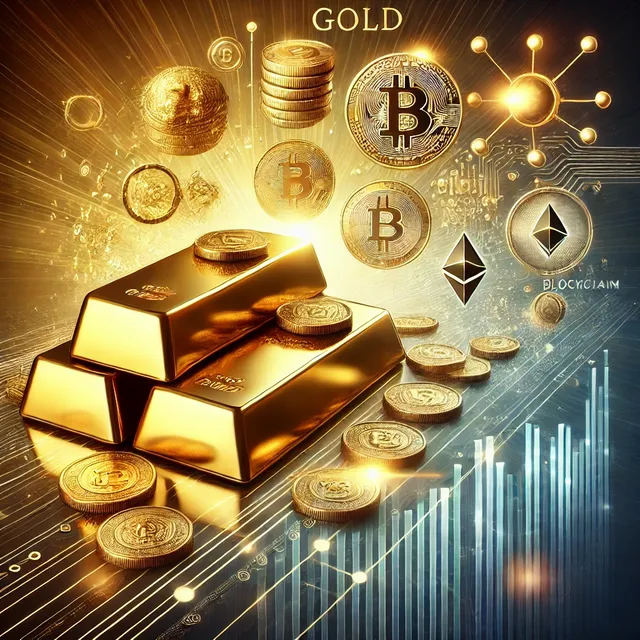Gold - The Financial Engine of Stability and Superiority
Gold: From Traditional Asset to Digital Driver of Global Markets
Gold is one of mankind's most enduring assets, valued across civilizations as a reliable store of value and medium of exchange. Over the centuries, it has maintained its position as a cornerstone of the global financial system. In the modern era, however, gold is no longer just a traditional safe-haven asset or a hedge against inflation; it has become a key player in the digitalized financial landscape. As the world embraces technologies such as cryptocurrencies and blockchain, gold has taken on a new role—not only as a physical asset, but as a digital commodity that is shaping the future of markets worldwide.
As economic uncertainty increases, gold remains an essential component of financial portfolios, providing stability and security. Even as digital assets gain prominence, gold's role as a trusted asset remains undiminished and continues to drive global financial decisions. The convergence of traditional markets and digital innovation has made gold a hybrid asset, bridging the gap between physical wealth and digital finance.
Gold through the Ages: From Ancient Medium of Exchange to Modern Economic Pillar
For thousands of years, gold has been a symbol of wealth, status, and power. Civilizations from ancient Egypt to the Roman Empire used gold as both currency and a measure of value. Its intrinsic qualities—scarcity, durability, and universal appeal—made it the preferred medium of trade and wealth storage. As economies developed, gold coins facilitated international trade and solidified gold's position as a critical global asset.
In the 20th century, the gold standard became a linchpin of the international monetary system, tying national currencies to gold reserves. Although the gold standard was abandoned in the 1970s, the metal remains critical to the reserves of central banks around the world. Today, as fiat currencies dominate, gold continues to act as a stabilizing force, underpinning economic confidence in times of market volatility. It has evolved from a purely transactional tool to a strategic reserve, essential for national security and economic sovereignty.
How Gold Supports Economic Stability During Global Financial Crises
Gold's role as a stabilizer is most evident during times of global financial crisis. When markets falter, investors flock to gold, driving up demand and prices. Gold's historical role as a store of value and its relative immunity to economic shocks position it as the ultimate safe-haven asset. In the 2008 global financial crisis, for example, gold surged in value as markets collapsed, reflecting its critical role in protecting wealth.
Countries with large gold reserves, such as the United States, Germany, and China, use the metal as a hedge against currency fluctuations and economic instability. Gold helps anchor their economies in times of geopolitical uncertainty and financial distress. Its value is not only monetary, but also psychological—providing both governments and private investors with a sense of security in turbulent times. As a physical asset, it is immune to the kind of systemic risks that plague financial institutions and digital assets in times of crisis.
Gold in the Digital Age: Cryptocurrencies, Blockchain, and the Future of Precious Metals Investing
The rise of digital assets such as bitcoin has revolutionized the financial landscape, leading to new methods of investing and storing value. The blockchain technology that powers these digital currencies has expanded investment opportunities for traditional assets, such as gold. Today, digital platforms allow investors to buy, trade, and store gold in a tokenized form without the need for physical storage. This integration of gold into the digital ecosystem creates new opportunities, making it easier and more efficient to invest in precious metals on a global scale.
In addition to facilitating the trading of gold-backed digital tokens, blockchain increases the transparency and security of gold transactions. This technology ensures that each transaction is immutable and verifiable, providing a layer of trust that is essential in modern financial systems. In addition, some cryptocurrencies are now backed by gold, combining the old-world stability of gold with the innovative potential of blockchain.
These developments mark the beginning of a new era in which gold is both a physical and a digital asset, catering to a wide range of investors—from conservative, long-term holders to tech-savvy, risk-taking traders. This fusion of gold with digital technologies has broadened its appeal and ensured its relevance in the 21st century financial world.
